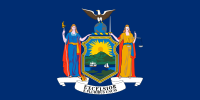
Photo from wikipedia
Abstract In 2006, two 1-ha orchard trials were established at each of two sites (Dressel farm in Southeastern New York State and VandeWalle farm in Western New York State) to… Click to show full abstract
Abstract In 2006, two 1-ha orchard trials were established at each of two sites (Dressel farm in Southeastern New York State and VandeWalle farm in Western New York State) to compare seven Geneva® rootstocks (‘CG.4210’, ‘G.11’, ‘G.16’, ‘G.41’, ‘G.30’, ‘G.210’, and ‘G.935’) with one Budagovsky (‘B.9’) and three Malling rootstocks (‘M.9T337’, ‘M.26EMLA’ and ‘M.7EMLA’) as controls. ‘Gala’ and ‘Fuji’ were used as scion cultivars at Dressel farm and ‘Gala’ and ‘Honeycrisp’ as the scion cultivars at VandeWalle farm. At each location trees were trained to four high-density systems: Slender Pyramid (SP) (840 trees ha−1), Vertical Axis (VA) (1284 trees ha−1), Slender Axis (SA) (2244 trees ha−1), and Tall Spindle (TS) (3262 trees ha−1). Location, rootstock, and training system, interacted to affect growth, production and fruit quality of each scion cultivar. ‘Gala’ trees from VandeWalle farm were smaller but more productive than those from Dressel farm. In general, the largest trees (in trunk cross sectional area: TCSA) were SP on ‘M.7’ rootstock and the smallest were TS on ‘B.9’ and ‘G.11’. Cumulatively, yield was lowest for trees on SP with ‘M.7’. However, the highest values were on TS with ‘G.11’ for ‘Fuji’, TS with ‘G.41’ for ‘Gala’, and TS with ‘G.16’ and ‘M.9’ for ‘Honeycrisp’. Independent of the cultivar, trees on SP with ‘M.7’ had the highest number of root suckers. When comparing systems which had the same rootstocks, TS trees were the least vigorous ones, but much more productive although, fruit red color was slightly reduced compared to the lower density systems. When comparing dwarfing rootstocks common across several systems, generally, ‘G.16’ trees were the largest, however ‘G.11’, ‘G.41’ and ‘M.9’ were the most productive for ‘Fuji’, ‘Gala’ and ‘Honeycrisp’, respectively.
Journal Title: Scientia Horticulturae
Year Published: 2019
Link to full text (if available)
Share on Social Media: Sign Up to like & get
recommendations!